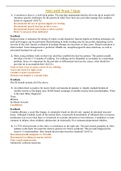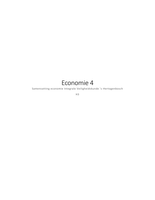Samenvatting
Statistics 1 summary
- Vak
- Statistics 1
- Instelling
- Universiteit Van Amsterdam (UvA)
(note: summary is written in English) The summary of statistics 1 is applicable for almost every scientific study. The summary includes: * descriptive statistics * probability calculations * inferential statistics * examples with explanation * a brief cheat sheet * extensive definition list
[Meer zien]






